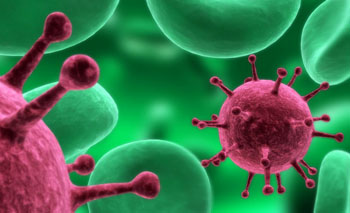Smart Nanoparticles Deliver Selective Heating to Kill Tumors
By LabMedica International staff writers
Posted on 28 Jul 2016
Cancer researchers have demonstrated a novel type of "smart" nanoparticle that can destroy a tumor through selective heating while causing minimal damage to surrounding normal tissues.Posted on 28 Jul 2016
Investigators at University Health Network (Toronto, Canada) described the use of PEARLs (photo-thermal enhancing auto-regulating liposomes) in a proof-of-concept paper that was published in the July 14, 2016, online edition of the journal Angewandte Chemie.

Image: A team of scientists has discovered an organic ‘smart’ biodegradable nanoparticle, named PEARL, that uses light and heat in a controlled manner to target and destroy tumors with bigger precision (Photo courtesy of the University Health Network).
Photothermal therapy (PTT) is enhanced by the use of nanoparticles with a large optical absorption at the treatment wavelength. However, this comes at the cost of higher light attenuation that results in reduced depth of heating as well as larger thermal gradients, leading to potential over- and under-treatment in the target tissue. These limitations can be overcome by using PEARLs, which are based on thermochromic J-aggregate forming dye–lipid conjugates that reversibly alter their absorption above a predefined lipid phase-transition temperature.
The investigators showed - in nanoparticle solutions and in gel phantoms containing the nanoparticles - that under irradiation by near-infrared light, deeper layers of the target tissue reverted to the intrinsic optical absorption, halting the temperature rise and enabling greater light penetration and heat generation at depth.
Senior author Dr. Gang Zheng, professor of medical biophysics at the University Health Network, said, "Our smart nanoparticle is super cool. It can absorb light, generate heat, and ablate the tumor. It is a thermal sensor and once it reaches the desired ablation temperature of 55 degrees Celsius, it becomes invisible allowing the light to move deeper into more areas of tumor and repeat the treatment process. The result is a promising new way to heat and ablate larger volumes of tumor with minimal damage to surrounding tissues in a controlled and precise way. The next step is to conduct pre-clinical studies to test the concept further."
Related Links:
University Health Network














